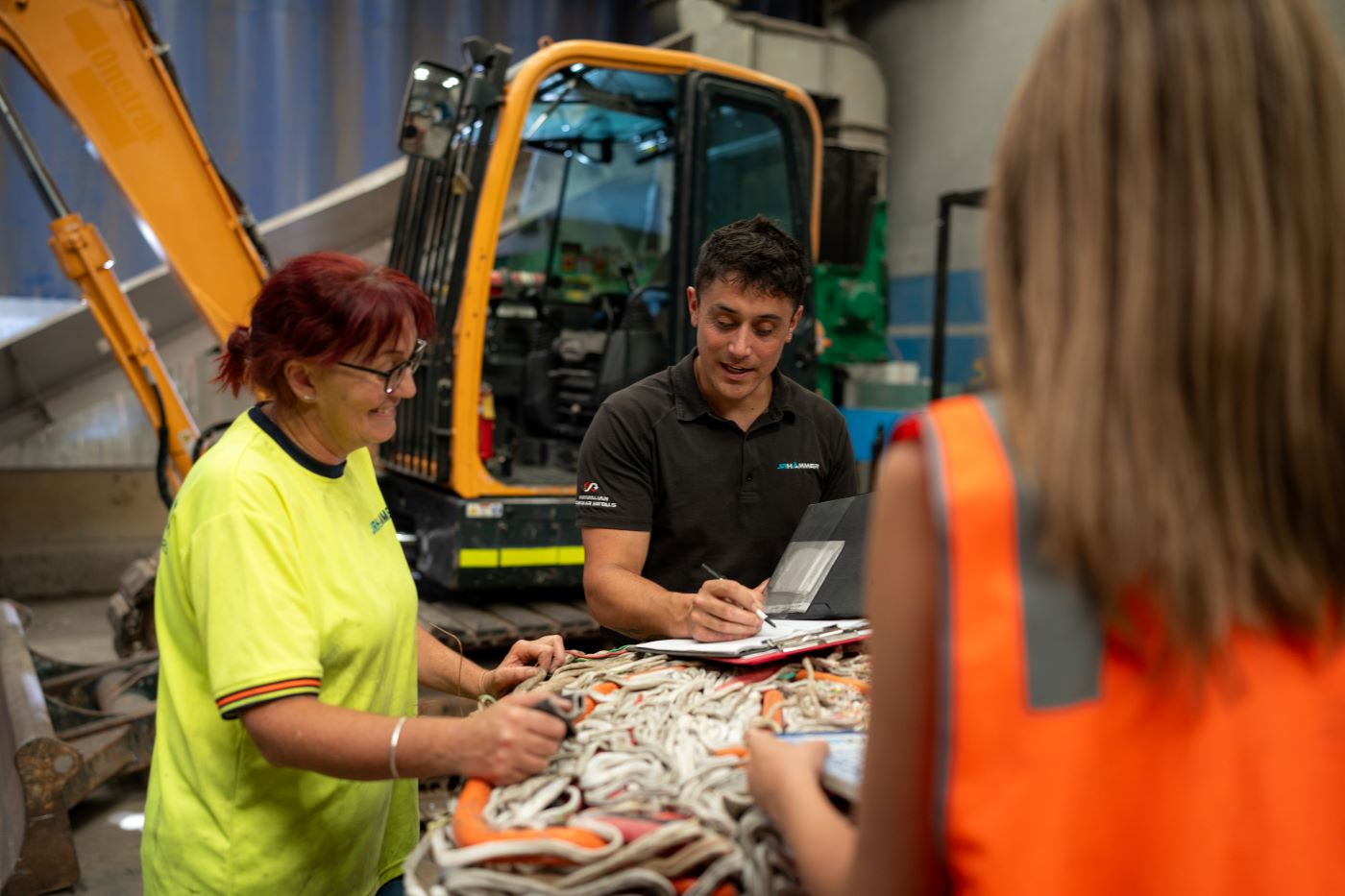Australia’s $64 Billion Gap: The Missing Infrastructure Between Construction Sites and Circular Recovery

What’s the real cost of ignoring circularity in construction?
Electrical contractors on construction sites want to do the right thing with cable waste. The problem isn’t commitment, but infrastructure.
Every year, Australia’s construction sector produces 29 million tonnes of waste. That’s 38% of everything the country throws away. For electrical contractors working on construction projects, cable waste represents a significant material stream that’s often overlooked in project-wide sustainability planning. The challenge is proving where it actually goes.
Only 14% of construction materials get genuinely recycled. The rest moves through what’s called “resource recovery” which often translates to materials ending up in landfill.
Australia is 4.6% circular as a country. That means nearly 96% of what the country use comes from virgin materials compared to the Netherlands at 24.5%. The gap isn’t about lack of effort but lack of a solid recycling infrastructure.
Australia’s 4.6% Problem
As construction projects pursue sustainability targets, electrical contractors face a material recovery challenge that’s largely unknown to project managers: PVC cable insulation makes up roughly half a cable’s weight. In traditional recycling operations, this material typically goes to landfill because most facilities can’t process contaminated PVC effectively. Only 3-5% of Australia’s PVC gets recycled annually.
This creates a significant gap. Even when cables are sent to recyclers, recovery rates average around 50%. The copper gets recovered; the PVC gets discarded. When construction projects aim for 80% resource recovery rates by 2035, trades on site need infrastructure that can achieve those targets.
Projects pursuing sustainability certification doubled between 2023 and 2024. These construction projects increasingly require trades to provide verified documentation of where materials go, not just assurances that waste was “recycled.”
The Cash-for-Scrap Problem Most Don’t Know About
Here’s something many electrical contractors don’t realise: Australia’s illegal cash-for-scrap trade is worth $500M annually. This underground market undermines legitimate recycling efforts and makes material traceability nearly impossible.
Many tradies accept cash for scrap metal without knowing this practice is illegal. The motivation is understandable: it’s quick payment for material that would otherwise cost money to dispose of. The trade-off? Zero documentation, zero accountability, and zero verified recycling outcomes.
For those working on construction projects that require ESG reporting or sustainability compliance, this documentation gap creates real problems. The cable waste leaves the site, payment happens, but there’s no way to prove what happened to the material. Project managers need verified waste diversion data, yet trades lack access to recycling systems that can provide it.
The Missing Infrastructure
Most recycling facilities only want pure, separated materials. What comes off electrical work on construction sites rarely looks like that. Cables arrive tangled with other materials, PVC covered in dust and debris, mixed metals bundled together.
The solution requires pre-processing infrastructure that can handle real-world site conditions: the end-of-day cleanups, the tangled offcuts, the contaminated materials that can’t go directly to standard recycling operations.
JR Hammer’s facility addresses this gap. The facility handles contaminated materials through pre-treatment before materials hit processing machinery. This approach allows for recovery rates of 90%+ compared to the industry standard of less than 50%.
Beyond standard recycling, JR Hammer’s RecyCable program works with Lecky’s and Middy’s: electricians drop off cables, receive store credits, and the whole cable, including the PVC is recycled sustainably. Every load comes with traceable certificates for ESG reporting and sustainability compliance.
The PVC challenge is being tackled through CSIRO and RMIT partnerships. JR Hammer is converting PVC cable waste into resin that meets manufacturing standards. The Envirolite concrete project with Gully Concrete isn’t a concept, it’s in production. JR Hammer also recovered over 2 tonnes of cable waste for a major agribusiness while solving their storage crisis.
Rethinking Resource Recovery
The infrastructure gap doesn’t need to be permanent. Solutions for electrical cable waste (including PVC recovery) are now available, along with the verified documentation that construction projects require.
Every tonne of cable waste leaving a construction site is either documented proof of circularity or a missed opportunity for sustainable and legal recycling. Which side of that gap will your next project fall on? Schedule your free waste audit here.
Explore more stories on our blog:
Behind Recycling Certificates: What Actually Happens to Your Waste After Collection?


